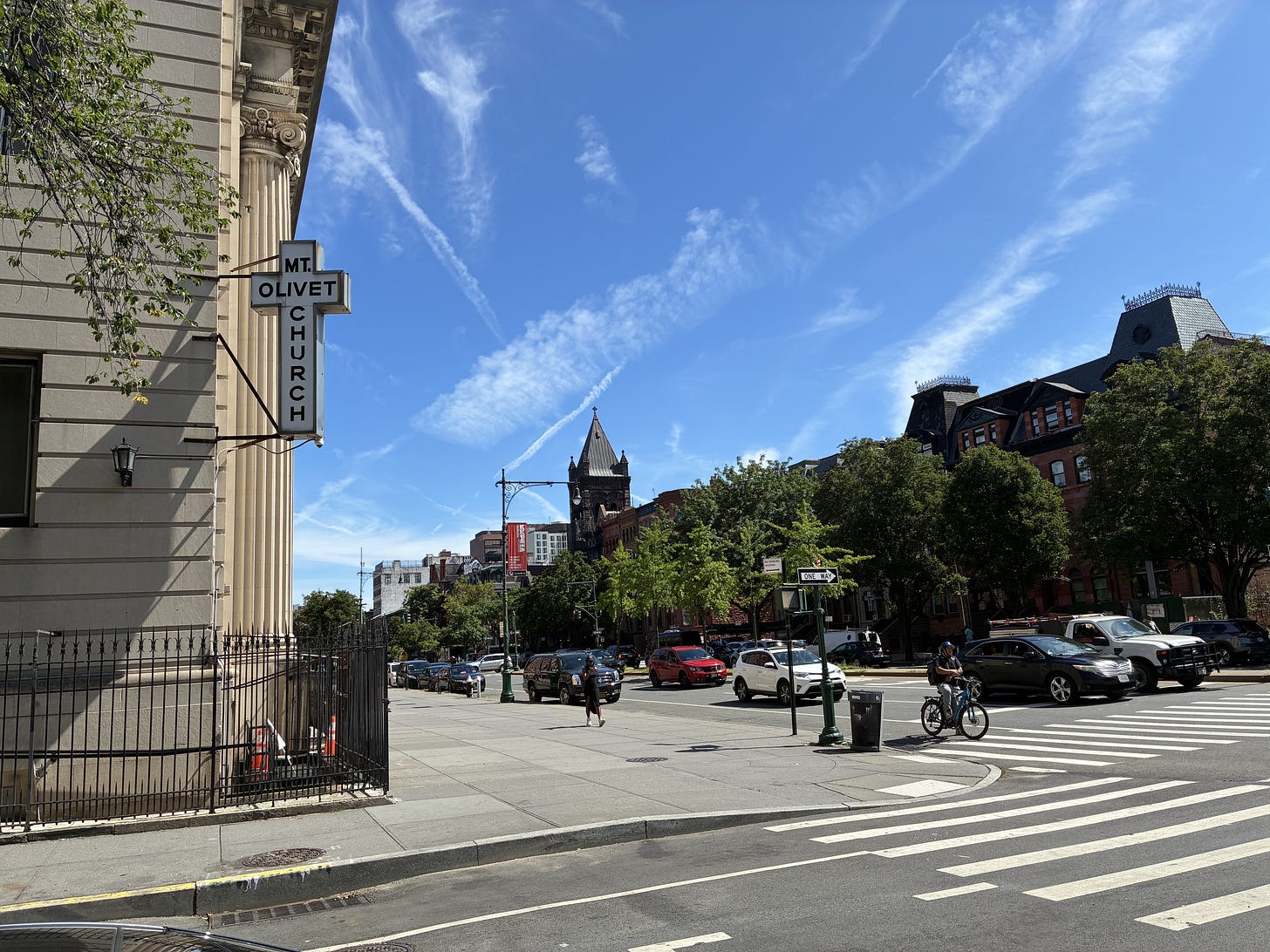Why Don’t We Explore More of Upper Manhattan?
Outdated perceptions and confused morals prevent students from visiting the school’s surrounding neighborhoods.
Columbia students have a complicated relationship with Harlem and the rest of Upper Manhattan.
On one hand, many students rightfully protest the displacement of lifelong West-Harlemites by the University’s new Manhattanville campus. Student groups like the United Front Against Displacement have issued statements and reports accusing Columbia of “gentrifying” and “occupying” properties north of campus and along 125th Street.
More recently, student protesters have likened Columbia’s gentrification of Harlem to its refusal to divest from Israeli-affiliated companies. Groups such as CUAD and SJP even conflate Morningside Heights—a historically distinct neighborhood—with Harlem in making that point.
Despite this, many students rarely visit and immerse themselves in the neighborhoods they advocate for. I recently asked on Columbia Sidechat, “How often do you walk either north of the Manhattanville campus or to the other side of Morningside Park?”, the unofficial borders between Morningside Heights and Harlem. While I cannot in good faith claim that nearly 300 Sidechat responses are representative of the entire student body, the results were fascinating.
60 percent of respondents said they only walk there about “once a month or so,” 23 percent said they have been there “only a few times ever”, and 18 percent reported that they have “never” walked there at all. This is all despite the fact that famous venues such as the Apollo Theater, Cotton Club, and Minton’s Playhouse are just a few minutes’ walk away from campus.
Such detachment also extends to neighborhoods further north like Washington Heights and Inwood. Manhattan goes on for another 100 blocks past campus, but stepping into Columbia’s subway station on a weekend, you will see far more students packed onto the downtown platform than the uptown one. Many are seemingly willing to travel a lot further to enjoy wealthier, whiter, and more touristy neighborhoods than take a chance on embracing the very communities they claim to fight for.
I raise this point not to say that students have any inherent obligation to visit more underserved neighborhoods. Rather, when considering the charm of Harlem’s attractions, many students seem to have an unfair aversion to visiting them. This is especially strange given the student activist community’s proud tradition of defending Harlem’s residents and businesses.
In fact, I’ve previously likened Harlem to merely being the “H-word” on campus. It physically surrounds the University but often represents nothing but a terra incognita to many students, an “abyss of vague dangers” that is so close yet so foreign to too many of us.
One comment I received on the Sidechat poll was that crossing these borders was the “scariest thing I've done in a while.” While individual experiences often paint one’s impression of neighborhood safety, the major crime rate in New York’s 28th Precinct (covering Central Harlem east of Morningside Park) is lower than that of far more popular areas including Midtown Manhattan, Brooklyn Heights, and Chinatown.
Meanwhile, the major crime rates for precincts 30 through 34, encompassing virtually all of Upper Manhattan north of the Manhattanville campus, are among some of the lowest in the borough. Washington Heights and Inwood have much lower property crime rates and similar violent crime and assault rates to trendy areas like SoHo, West Village, and Tribeca.
It’s almost as though Columbia’s perception of the surrounding area has been stuck in time, glued to an era now half a century old when students were warned to never step foot in Morningside Park, a piece of advice many of us may have received from relatives or alumni who previously lived in the city.
In contrast, students have many reasons to venture uptown. Any former AP U.S. History student can recall the amount of black history and cultural importance that Harlem is home to, in addition to its vibrant nightlife and food scene. Further north in Manhattan there are countless scenic destinations like Riverbank State Park, the High Bridge, and the former home of Alexander Hamilton. At the top of the island in Inwood, one can visit the Met Cloisters or, of course, attend a Columbia sports game.
Indeed, there are many more neighborhoods, restaurants, and attractions south of campus across the rest of the city. Yet for its proximity and all that it offers, Upper Manhattan deserves to be visited far more than just “every month or so.” As socially conscious students, we should feel compelled to break through the bubble that is Morningside Heights and appreciate, support, and engage with our surrounding communities more.
Mr. Baum is a junior in the joint degree program between Jewish Theological Seminary and the School of General Studies. He is a senior editor for Sundial.
The opinions expressed in this article are solely those of the author and do not necessarily reflect the views of the Sundial editorial board as a whole or any other members of the staff.
For those interested in submitting a response to this article, please contact us at columbia.sundial@gmail.com.




Look, being a victim of street crime is an awful experience. It's humiliating, it's scary, and it tends to make you lose faith in people. But the author's right: there's a lot of great stuff north of campus. Just do your research: some of the neighborhoods are legit dangerous, and some aren't. And even with the dangerous neighborhoods, just use your head: don't hang out there alone at 1 AM.